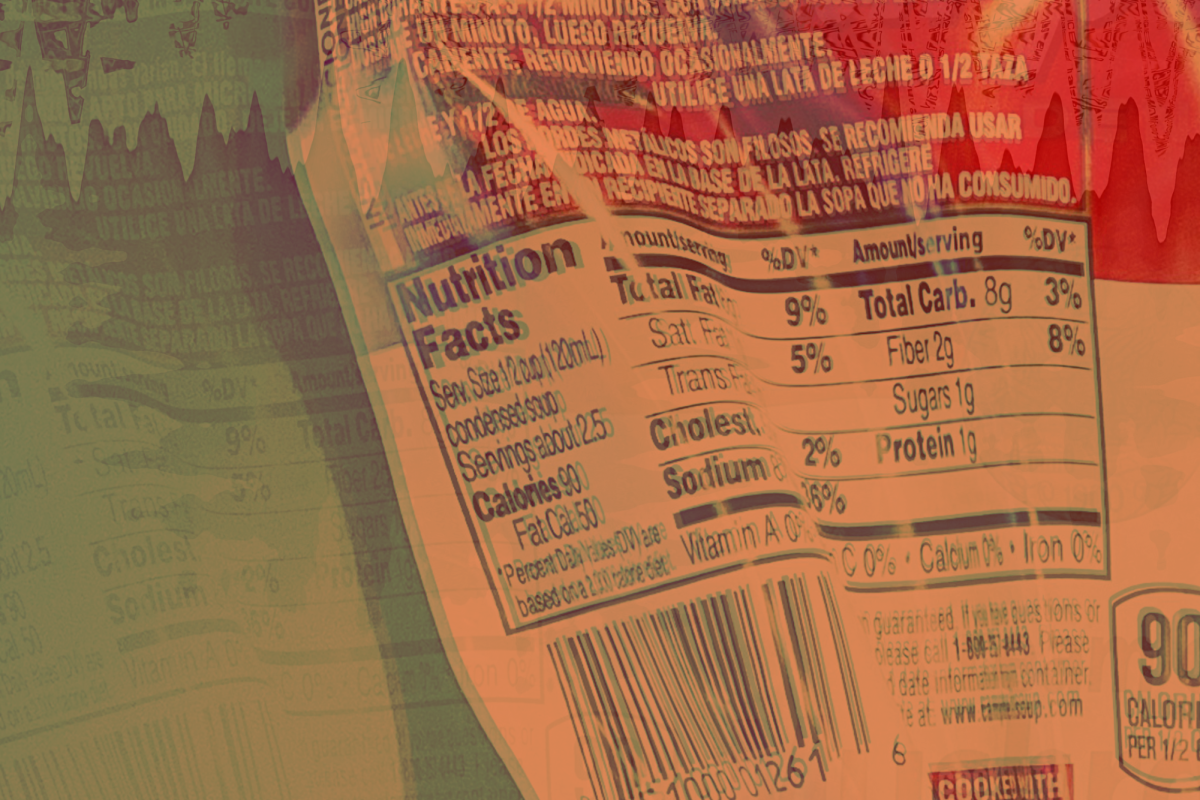Scan the shelves of any grocery store, and you will see we have a severe junk food problem. Seventy-three percent of the American food supply is ultra-processed. These foods are addictive, unhealthy, and far from “grown-in-the-garden.” We pay the price with diabetes, obesity, cardiovascular disease and more. Unhealthy food is killing us. Saving our health begins with improving nutrition labels.
Current nutrition labels endorse sickness as they are confusing, inaccurate and deceptive. The FDA must enforce better nutrition label standards and formulate a more readable design. So long as the FDA fails to improve nutrition labels, they prevent Americans from embracing a healthy future.
Basics
Solving America’s nutritional issues is no easy fix; we cannot do so without knowing what comprises our food. Good nutrition labels are immensely important, giving us crucial information regarding food content.
With poor diets being a central cause of health issues, all University of Utah students and Americans should care about nutrition labels. The harsh reality is that health risks, like obesity and diabetes, have been rising. If we fail to act, a grim future awaits us, yet the FDA stands idly by as we approach that future. The FDA must improve nutrition labels to steer us in a healthier direction.
A 2018 study revealed that when nutrition labels are present on packages, people do not improve every aspect of their diets. However, nutrition labels directly increase vegetable consumption, decreasing caloric intake.
When forced to provide nutrition labels, companies decreased unhealthy sodium content by 8.9% and trans fat by 64.3%. In other words, nutrition labels kept food companies in check.
Good nutrition labels empower consumers to make healthy choices. Improving health is of utmost importance. The FDA must actualize the full benefits of good nutrition labels by making them honest, accurate and straightforward.
Stars, Letters and Symbols
A great failure of the nutrition label is its confusing design. The design does not cater to normal citizens. Confusing numbers, percentages, small font sizes and other design choices reduce readability.
Roughly 80% of Americans claim to read nutrition labels regularly. People clearly care about them. Yet, most Americans don’t understand over half of what is on a nutrition label. The FDA must improve the nutrition label design to make them more comprehensible.
The FDA should replace confusing numeric values with phrases like “high in sugar” or “low in iron.” They should embrace the colors, symbols, letter ratings, star ratings and traffic light symbols used in several other countries. As other countries embrace the future with creative label designs, we must not remain stuck in the past. The FDA must ensure that we follow them into the future.
It is unacceptable for poor label designs to confuse Americans any longer. It is the FDA’s job to ensure public health. So long as nutrition labels are unreadable, the FDA fails to fulfill its responsibilities. Inaction is unacceptable.
Beyond the Label
Unreadable nutrition labels are not the only cause of consumer confusion. Deceptive marketing tactics cause widespread confusion regarding what foods are healthy.
A survey of 2,000 Americans revealed that only 9% of people could identify the healthiest of six cereal bars. Thirteen percent thought that the least healthy cereal bar was the healthiest one. Misleading packaging phrases like “naturally flavored” or “whole grains” swayed customers towards unhealthy foods.
Food companies use an extensive list of misleading phrases. The term “natural” is meaningless. The health of “low-sugar” products is often canceled out by increased fat levels. “Fruit-flavored” often means chemical-filled. Companies also mislead consumers with wrapper designs, colors, packaging shapes and packaging materials.
It is entirely unethical for companies to sell their products under false pretenses. When companies use deceptive marketing tactics, they screw over consumers. It is disgraceful that the FDA stands by as these companies keep us sick.
Serving Size Scam
The FDA watches complacently as food companies use serving sizes – and other tactics – to deceive customers.
Nutritional facts on food labels tell us the amount of nutrients and calories in one serving size. A food’s serving size should equal the amount of the food that people are expected to eat. However, these serving sizes are often unrealistically small and so people will eat several servings at once. The nutrition label lists far fewer calories, sugars and nutrients than what people will actually eat. The nutritional facts on labels represent a glamorized picture of reality.
Food companies hide behind unrealistic serving sizes as they pump their products full of addictive and sickening ingredients. The FDA watches complacently. Unrealistic serving sizes – and the FDA’s silence – trap consumers from both sides. Consumers can either spend time closely calculating food content or forgo calculation at a risk to their health. The FDA must enforce the use of accurate serving sizes.
The Ills of Inaccuracy
The FDA’s aforementioned failures and shortcomings regarding nutrition labels pale compared to their greatest offense. The FDA’s guidelines legally allow nutrition labels to be up to 20% inaccurate. The FDA doesn’t merely allow food companies to be deceptive; it allows them to blatantly lie to Americans.
Nutritional facts – like calorie count – are permitted to be listed incorrectly. Unhealthy food content like trans fat – which has been limited or banned by several countries – can also hide inside foods. The FDA permits foods with under 0.5 grams of trans fat to be labeled “trans-fat-free.” The FDA’s 20% inaccuracy guideline – and the lies it permits – are far from harmless.
Labeling accuracy varies considerably, but consumers deserve full transparency. Inaccurate nutrition label information can interfere with goals to lose weight, control diabetes, limit certain foods or live healthfully. Accurate labels are critical.
In conclusion, our ability to make healthy decisions depends on nutrition labels. The FDA must improve nutrition labels’ accuracy, honesty, clarity and design. This is a vital step towards building the healthy future we all deserve.
emma.smith@dailyutahchronicle.com




